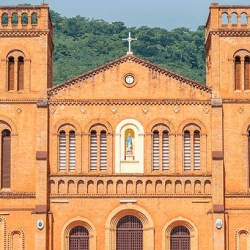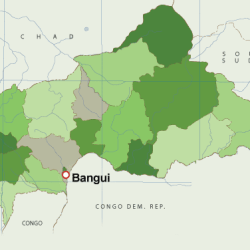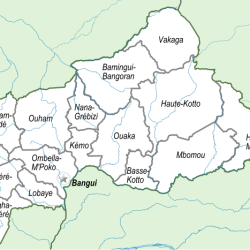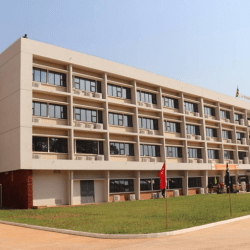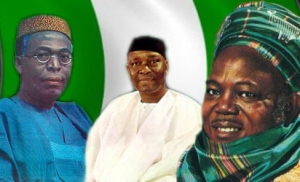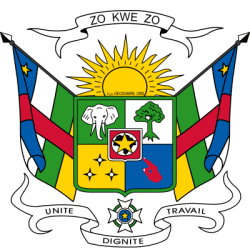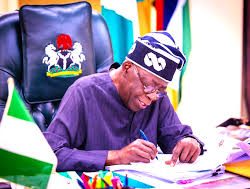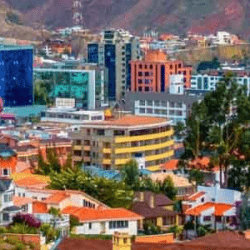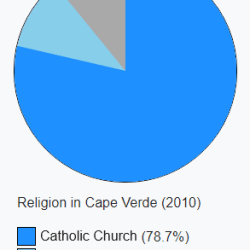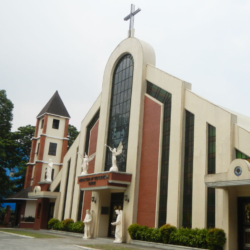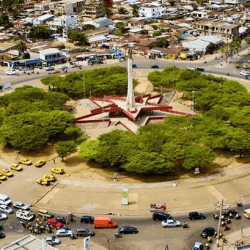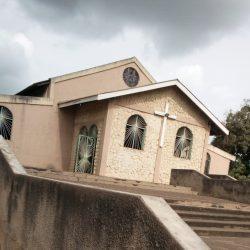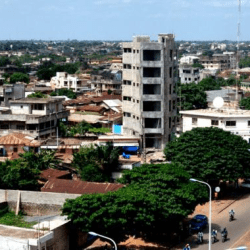The main religion in Central African Republic is Christianity and majority of the Christians in the country are Roman Catholics.
According to the 2003 national census, 80.3% of the population is Christian (51.4% Protestant and 28.9% Roman Catholic), 10% was Muslim and 4.5 percent other religious groups, with 5.5 percent having no religious beliefs.


Pew Research Center estimated that, as of 2010, Christians constituted 89.8% of the population (60.7% Protestant and 28.5% Catholic) while Muslims made up 8.9%.
The Catholic Church has over 1.5 million adherents, approximately one-third of the population.
Indigenous belief (animism) is also practiced, and many indigenous beliefs are incorporated into Christian and Islamic practice.
Religious tensions between Muslims and Christians can be high in the country.
There are many missionary groups operating in the CAR, including Lutherans, Baptists, Catholics, Grace Brethren, and Jehovah’s Witnesses.
While these missionaries are predominantly from the United States, France, Italy, and Spain, many are also from Nigeria, the Democratic Republic of the Congo, and other African countries.
Large numbers of missionaries left the country when fighting broke out between rebel and government forces in 2002–3, but many of them have now returned to continue their work.
According to Overseas Development Institute, during the crisis ongoing since 2012, religious leaders have mediated between communities and armed groups; they also provided refuge for people seeking shelter.
More on Central African Republic
Central African Republic (CAR) is a country in Central Africa. It is bordered by Chad to the north, Sudan to the northeast, South Sudan to the east, the Democratic Republic of the Congo to the south, the Republic of the Congo to the southwest, and Cameroon to the west.
Bangui is the country’s capital and largest city.
Capital: Bangui
Population (2023): 6,1 million




Bangui is located at the border of the Democratic Republic of the Congo.
The Central African Republic covers a land area of about 620,000 square kilometres (240,000 sq mi). As of 2021, it had an estimated population of around 5.5 million.
Most of the Central African Republic consists of Sudano-Guinean savannas, but the country also includes an equatorial forest zone in the south.
Central African Republic was given the name Ubangui-Shari when it was founded as a French colony in 1903.
Two-thirds of the country is within the Ubangi River basin (which flows into the Congo), while the remaining third lies in the basin of the Chari, which flows into Lake Chad.
France modeled its administration of the colony after the Belgian Congo, subcontracting control of the territory to private companies that collected rubber and ivory.
Although France banned the domestic slave trade in the country in the 1910s, the private companies continued to exploit the population through forced labor.
The colony of Ubangi-Shari gained independence from France as the Central African Republic in August 1960
After gaining independence from France in 1960, the Central African Republic was ruled by a series of autocratic leaders.
By the 1990s, calls for democracy led to the first multi-party democratic elections in 1993. Ange-Félix Patassé became president, but was later removed by General François Bozizé in the 2003 coup.
The Central African Republic Bush War began in 2004 and, despite a peace treaty in 2007 and another in 2011, civil war resumed in 2012. The civil war perpetuated the country’s poor human rights record: it was characterized by widespread and increasing abuses by various participating armed groups, such as arbitrary imprisonment, torture, and restrictions on freedom of the press and freedom of movement.
Despite its significant mineral deposits and other resources, such as uranium reserves, crude oil, gold, diamonds, cobalt, lumber, hydropower and arable land, the Central African Republic is among the ten poorest countries in the world, with the lowest GDP per capita at purchasing power parity in the world as of 2017. As of 2021, according to the Human Development Index (HDI), the country had the fourth-lowest level of human development, ranking 188 out of 191 countries.
The Central African Republic is a member of the United Nations, the African Union, the Economic Community of Central African States, the Organisation internationale de la Francophonie and the Non-Aligned Movement.
